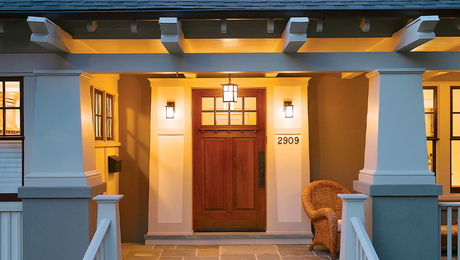I just received and read the Issue 323 // June 2024 of Fine Homebuilding that included an excellent article titled Watertight Chimney Cricket. The last, large illustration on the third page of the article showed the metal flashing & counterflashing, but it kind-of glossed over a critical detail that’s been a bit of a headscratcher, for me anyway, for many years. How do you effectively deal with the pinhole that occurs in the finished flashing that happens at the point in the step-flashing where it changes direction and where the ridge of the cricket meets the vertical face of the chimney and also at the bottom exterior corners where the apron flashing meets the step flashing? With copper, you can seal that corner with solder before the apron or terminal step flashing piece gets installed, but you can’t solder pre-finished metal or any metal already in place. And it doesn’t matter how carefully you measure and/or cut the metal at these locations, you ALWAYS end up with a hole in the flashing there. And sealant at those locations is a maintenance item that never happens. What do you do?
Discussion Forum
Discussion Forum
Up Next
Video Shorts
Featured Story

Lighting up an exterior isn't just about ambiance— it's also about code compliance. Here is what the code says about safety and efficiency when it comes to outdoor lighting.
Highlights
"I have learned so much thanks to the searchable articles on the FHB website. I can confidently say that I expect to be a life-long subscriber." - M.K.
Fine Homebuilding Magazine
- Home Group
- Antique Trader
- Arts & Crafts Homes
- Bank Note Reporter
- Cabin Life
- Cuisine at Home
- Fine Gardening
- Fine Woodworking
- Green Building Advisor
- Garden Gate
- Horticulture
- Keep Craft Alive
- Log Home Living
- Military Trader/Vehicles
- Numismatic News
- Numismaster
- Old Cars Weekly
- Old House Journal
- Period Homes
- Popular Woodworking
- Script
- ShopNotes
- Sports Collectors Digest
- Threads
- Timber Home Living
- Traditional Building
- Woodsmith
- World Coin News
- Writer's Digest


















Replies
thank you so much for your suggestion. really appreciate that.
Few fold the bottom corner over but it’s the way to do it and explained very well in the Bible- the Slate Roof Bible. Author Joseph Jenkins explains it in this video but it’s drawn really well in the book. It’s a fantastic book that I highly recommended anyone to read.
https://www.google.com/search?q=slate+roof+bible+chimney+flashing&ie=UTF-8&oe=UTF-8&hl=en-us&client=safari#fpstate=ive&vld=cid:56f61663,vid:KnwPjsiuJfc,st:0
Great video- thanks! That technique will work great for brick & other masonry chimneys, but not so much on structure corners intersecting roofs, like dormer corners or upper-level stories. And that book you recommended is excellent- I lost access to my office's copy when I got furloughed, then laid off when Covid hit the country, along with the SMACNA & NRCA Steep Roofing Manual.
In my professional opinion & experience (I'm an architect), if you aren't using copper (as a minimum grade product) for your flashing with a slate roof, you have automatically significantly compromised the normal life span of an otherwise outstanding roof. And slate roofers seem to be a dying trade in my part of the country. There are very few competent slate roofing contractors within a several hundred mile radius of where I typically work, and they are in high demand and well booked-up. The biggest problem I have is with roofers who do asphalt shingle roofs. Building it cheap and fast is the highest priority; craftsmanship be damned. They, in the best of circumstances, just don't know how to achieve a no pinhole solution in this very common flashing situation.
Thanks for sharing your experience! Dealing with pinholes in flashing can indeed be tricky. One approach is to use specialized sealants designed for metal flashing, ensuring a tight seal without relying on soldering. Another method is to use metal patches or overlays to cover the pinholes before installing the flashing. It's a common challenge, but with some creative solutions, you can achieve a watertight chimney cricket.
Do you happen to have any sealant product recommendations? That's probably the only way to achieve a no pinhole solution when using prefinished metal flashing, which can't be soldered.
To effectively deal with pinholes in finished flashing at corners and transitions, use a high-quality polyurethane sealant designed for roofing applications. Apply the sealant generously to cover the pinhole and ensure a watertight seal. Additionally, consider using a compatible metal patch or overlay if the pinhole is particularly large or problematic.